#roleplaying game
Text
Stealth worldbuilding.
Put in your backstory that France sunk into the waves in 1892 and wait until the GM mentions a french character to bring it up
433 notes
·
View notes
Text
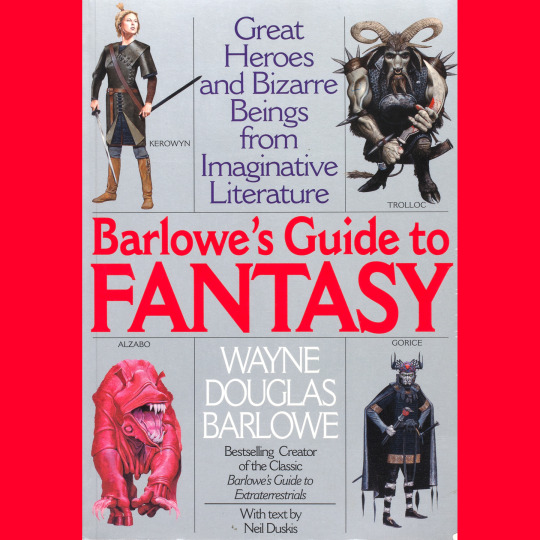
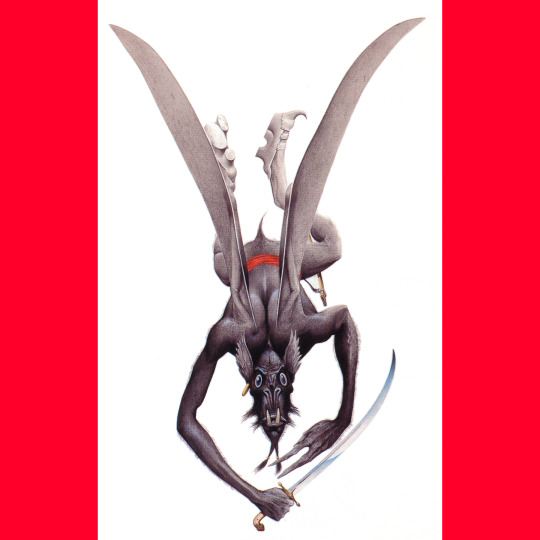
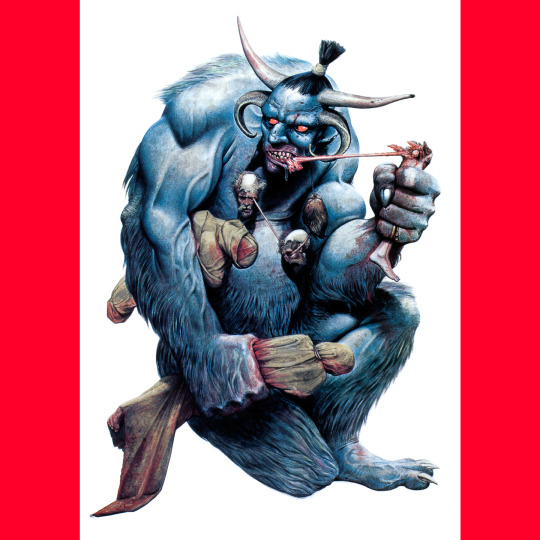
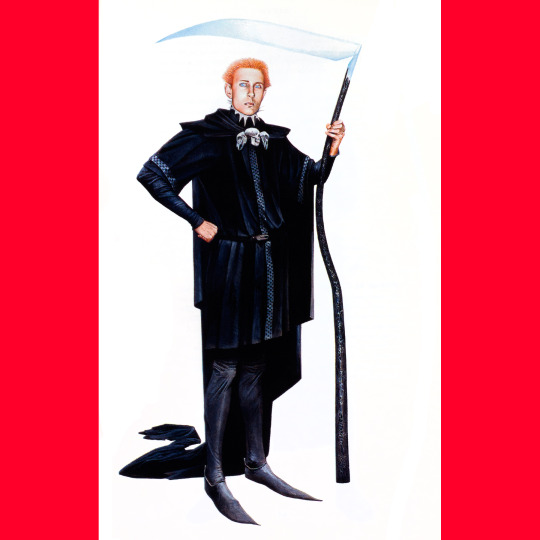

Barlowe's Guide to Extraterrestrials was well received and won a couple of awards (and a second edition, I think in ’87?). It took a little while for the sequel to emerge: Barlowe’s Guide to Fantasy hit shelves in 1996.
Even though I am not super widely read in either fantasy or science fiction, Barlowe’s fantasy book is the one I really vibe on. Maybe because it allows him to do stuff like Grendel from Beowulf and Gorice from The Worm Ouroboros. Wouldn’t have expected Gideon Winter, the antagonist from Peter Straub’s odd novel Floating Dragon to be included, but he was. Other surprises are the Psammead from Five Children and It and the Saw Horse from Oz.
One of the coolest things about these books is the fold-out size comparison charts. I love a good size-comparison (and again, this is a big feature of those Petersen’s Guides for Call of Cthulhu, and I am sure it came directly from here).
297 notes
·
View notes
Text
It's a great day to consider the vast array of other RPGs out there other than D&D. If you want that style of game, Pathfinder is great. And if you feel like trying something new, there's so much to explore...
Amazing timing for this article to come out the day Critical Role opens the beta for their own RPG system...
1K notes
·
View notes
Text
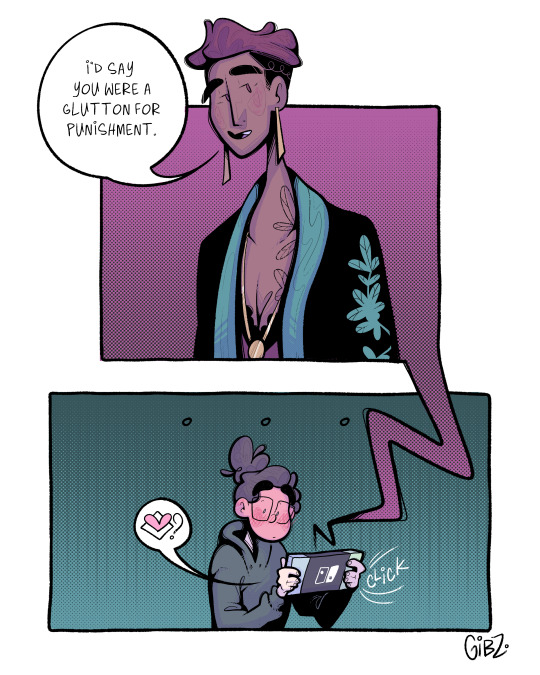
my experience playing stray gods. i wish i were not so obvious but persephone was made for me specifically.
#stray gods#persephone stray gods#comic#fanart#stray gods fanart#stray gods persephone#stray gods spoilers#stray gods game#art#artist#artwork#fancomic#roleplaying game#stray gods the roleplaying musical#illustration#artists on tumblr#fan art
608 notes
·
View notes
Text
That Ghibli inspired 5e book that I saw some people commenting sparked a lot of thoughts in my mind, but most of it is how we are filled with books with a lot of surface level inspirations that dont make a full critical analysis of what they are referencing and end up being not even a good homage but fail to unuderstand their inspiration, like saying that they are a cozy game but fill the rules with stat blocks and loot. It also always coming back to this nature of ttrpg in general to use pre estabilished systems that most of the time dont work with the fiction they have in mind, because that system itself is created with another fiction in mind. But the first thing that comes to my mind is that those products dont strive to be engaging and fun, is just to generate profit quick using a system that is very marketable, a visual style that is generally adored and you can post how you reach your ks money in 10 seconds.
It is a pattern not uncommon not only in ttrpg but game in general, something is popular or becomes popular and there is a lot of copycat, but with the tabletop rpg scene tradition of using srds, specially the OGL because it's tied to Dnd and it's big popularity, we see more of it, or at least a version that I don't want to call lazy, but focuesd on only generating buzz and sales on Kickstarter.
698 notes
·
View notes
Text


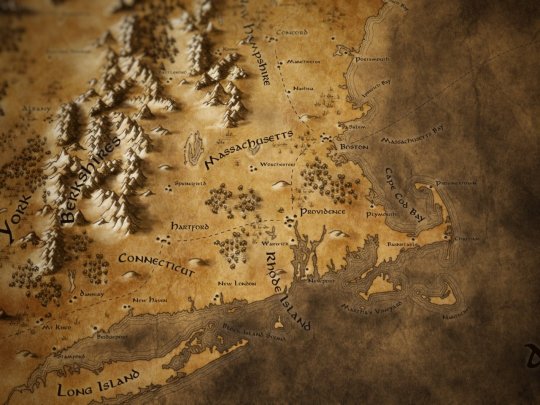
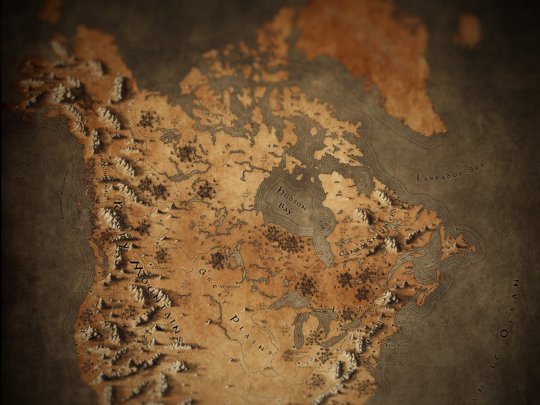
I made a set of Tolkien inspired fantasy maps of real-world locations including Scotland, the UK and Ireland, Europe, New England and North America for fun but turns out people like using them in their games so, here's how you can find them!
You can download copies of all these maps for free with or without labels for printing or use in your TTRPGs over on my Tumblr page here:
Fantasy Maps in a Tolkien Style
You can also buy prints of these maps on my Redbubble page :
If you would like to use these in a commercial project, drop me a DM and I'd love to chat!
#Maps#Tolkien#cartography#middle earth#lotr#fantasy maps#D&D#dnd#pathfinder#ttrpg#map making#hobbits#shire#rpg#roleplaying game#gimp#mountains#Scotland#UK#America#New England#Ireland#Europe#scottish#jrr tolkien#lord of the rings#the hobbit#mapmaking#digital art
2K notes
·
View notes
Text

Do you ever worry about helmets vs no helmets in your game?
174 notes
·
View notes
Text
if internet comments on cookbooks were like the ones on D&D books
https://www.wired.com/2008/06/alttext-0618/
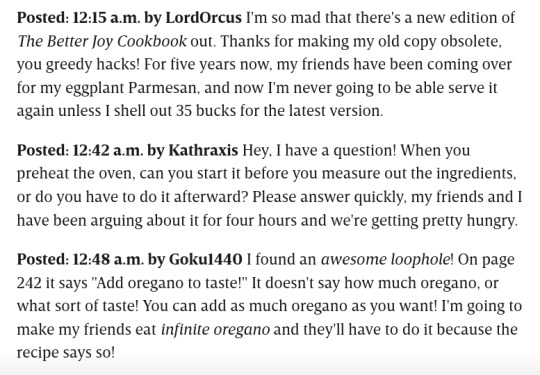


Source: https://www.wired.com/2008/06/alttext-0618/, which I found out about from https://twitter.com/mxdshipwreck/status/1669480866891051008
#rpg#ttrpg#roleplaying#roleplaying game#tabletop rpg#tabletop roleplaying#tabletop role-playing game#d&d#dnd#dungeons and dragons#dnd memes#d&d memes#wired#infinite oregano
424 notes
·
View notes
Text

A new random artefact just for the fun of drawing disgusting organic clumps.
#rpg#roleplaying game#rpg art#fantasy rpg#concept art#concept artist#items concept#item design#art#artist on tumblr#digital art#digital painting#illustration#my art#artist#original art
186 notes
·
View notes
Text



#ttrpg#indie ttrpg#mythical creatures#creature#boardgames#role playing games#fantasy#roleplaying game#tabletop games#tabletop roleplaying#tabletop role playing game#whimsical
381 notes
·
View notes
Text

Free TTRPG!
Won't You Guide My Sleigh Tonight is a family-friendly TTRPG that uses your Christmas tree as a playmat!
Step into the shoes of Santa's backup reindeer team as they embark on a mission to save Christmas!

A PDF version is available on my Itch page!
#ttrpg#tabletop role playing game#tabletop rpg#christmas#reindeer#rudolph#roleplaying game#free game
51 notes
·
View notes
Text
Monster who eats your backstory.
It bites you and you've now sprang into being just now ex nihilo
343 notes
·
View notes
Text
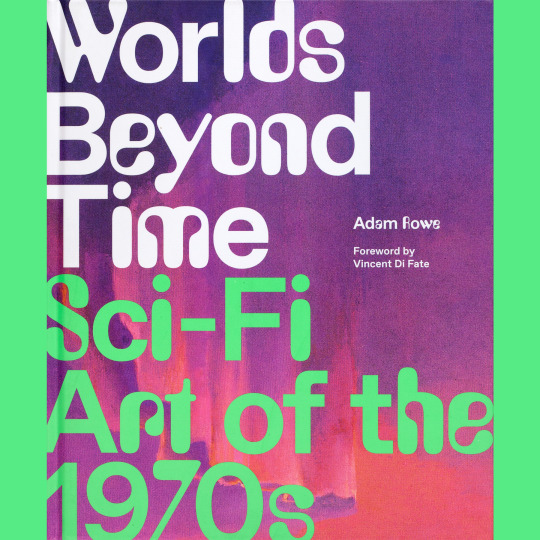
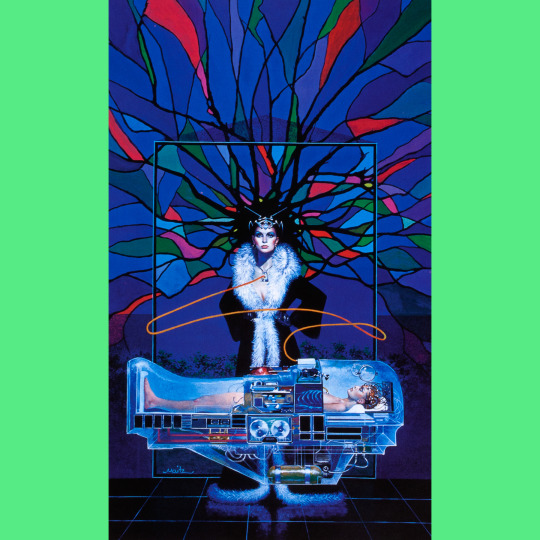


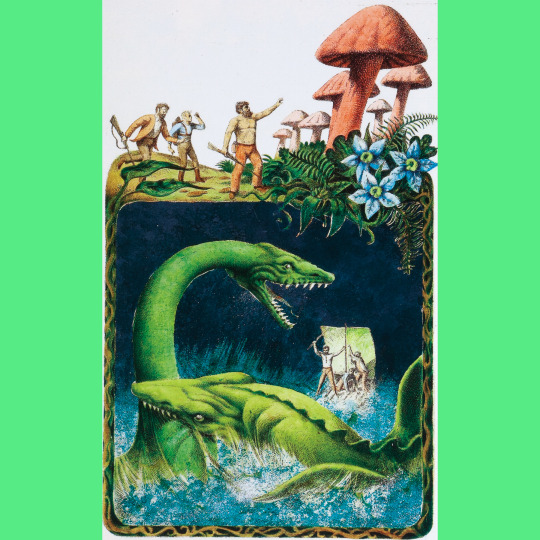
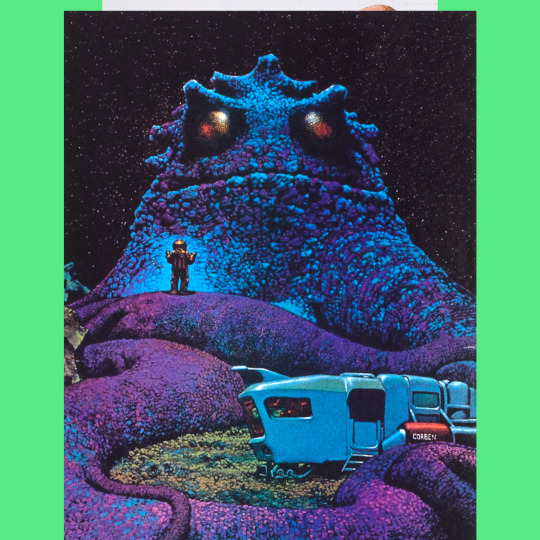
There is, I think, no arguing that contemporary genre art has a character distinct from previous decades. I also think that while there are big shifts in aesthetics somewhat aligning with each decade of the 20th century, here in the 21st things have definitely slowed down — I feel like the look of genre art has fossilized somewhat in the last 20 years. I don’t have a good explanation for why. Sometimes I wonder if I’m blinded by nostalgia, and that there really aren’t any obvious objective differences at all.
Worlds Beyond Time: Sci-Fi Art of the 1970s (2023) is a compelling argument, I think, that there ARE definite differences. The book, by Adam Rowe (and spinning out of his social media accounts dedicated to, well, ’70s science fiction art) looks at both artists and thematic categories of art from the period, mostly from paperback covers, and offers commentary and historical context in the text. The result is startling: a body of work by a variety of artists working in their own styles that nevertheless seems visually unified. With the exception of a couple outliers, this stuff all feels of the ’70s. The fact that there are some inclusions from both the ’60s and ’80s makes this even clearer.
I think the most interesting thing about this is how bizarre some of the ’70s art seems to be. A lot of these artists appear to be entirely off the leash, delivering work they WANTED to produce rather than what they were directed to produce (you can see a shift toward clearly pairing the cover art with the content of the book in the later part of the decade). There was also more money in the work, then, so speed wasn’t quite so big a part of the equation as it is now.
And, greater questions of genre art aside, Worlds Beyond Time is still a mesmerizing collection, worthy of your time even if you just want to feed pictures to your eyeballs.
129 notes
·
View notes
Photo


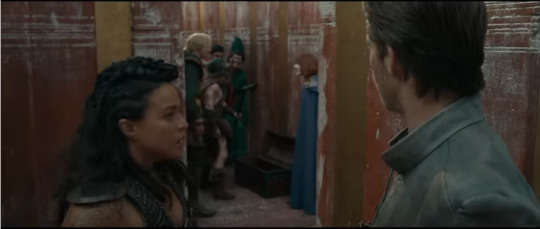
"You know those guys?”
“I swear I’ve seen them somewhere before...”
#dungeons & dragons#Dungeons and Dragons#dungeons and dragons honor among thieves#saturday morning cartoons#sheila the thief#hank the ranger#bobby the barbarian#eric the cavalier#diana the acrobat#presto the magician#chris pine#edgin the bard#michelle rodriguez#holga the barbarian#80s nostalgia#roleplaying game#d&d#dnd
314 notes
·
View notes
Text
If youre pissed that WOTC is revoking its old ogl, you might be wanting to boycott them go play other games for a bit.
Now Im not a die-hard expert on all the ttrpgs out there, but there are a few that I particularly like and recommend if you dont know where to start:
• Ryuutama
I love Ryuutama so much. Its a lot simpler than dnd and really gives older japanese rpg video game vibes. Its very cozy fantasy with a heavy focus on adventuring and story telling than on battling. The english translation was actually a kickstarter thing, and it’s also in dire need of more homebrew content because there was supposed to be a translation of the supplement but thats probably never gonna happen anytime soon, if ever.
• Call of Catthulhu
No, I did not spell it wrong. Put simply, Call of Catthulhu is Call of Cthulhu but with cats. You all play cats. Dont let that fool you though, it can get surprisingly tense and gruesome if you play it right. You’ll probably love it if you were a warrior cats kid.
• Delta Green (and CoC in general)
“Modern” (1980’s) setting for (actual) Call of Cthulhu. The CoC games are fun if you like mysteries, conspiracies and yknow. cosmic horror stuff.
• Traveller
A scifi rp where you play a dude in space (an explorer, traveller, soldier or trader). This one is fun because character creation is VERY extensive and is part of the gameplay, but before the story starts. You make roles to determine all of the things that happened to you prior to the adventure like, did you go to university, have you suffered any life-altering injuries to your mind or body bc of some terrible accident, did you accidentally get aged 50 years older by getting zapped through a wormhole? Fun stuff like that. My friend calls it the existential crises rpg.
• Pathfinder
I mention it obligatorily because people tell me its the most like dnd without technically being dnd but I havent played it.
Anyway there are definitely so many more games but those are the ones I’ve played (other than pathfinder) and enjoyed. Feel free to reblog with your own additions to the list.
#alternatives to dnd#ttrpg#ryuutama#pathfinder#dnd#dnd5e#traveller#delta green#call of cthulhu#call of catthulhu#roleplaying game#wotc#hasbro#wizards of the coast#open gaming license
297 notes
·
View notes
Text
Tabletop rpgs are a interesting case when it comes to game, not only it's a very social and open form of game but because it's also the most difficult game (tabletop or digital) for people to actually play it.
By nature a tabletop rpg require effort, time and a sizable group of friends. Digital games most of time requires only a single player to boot the game, if it's multiplayer you usually can play with random people online. Tabletop games requires a little more effort reading the rules, setting up the game and having people to play it (there is also solo games), but when compared to ttrpgs the reading is a lot smaller and even the players needed depending of the game is very small than a optimal group size for a ttrpg.
But the biggest effort that ttrpg requires is time, you and your players have to commit to a campaign that even if it's short can spam multiple weeks to finish, and being adults in this capitalist hellscape having time to join with friends to play for 2-4 hours is kinda rare.
But Im not saying this as something bad, while it requires effort ttrpg is a beautiful and unique experience, where players join together to immerse themselves in a world and have fun with the game. But looking this as a game designer I started to see a big risk of developing a ttrpg, and the risk is that there is great possibility that our game even if it's bought by people might never be used in a single session.
People are afraid to change, to try something new, and this include games, that's one of the reasons Dungeons and Dragons dominate the scene, they use this attachment people have with things and products very well, and people see the idea of play another game as a risk, they dont want to risk using their rare ttrpg time to play something new and be unsatisfatisfied, and that's makes sense. Even group of players that plays multiple ttrpgs have difficult to play all the their library because while they are able to play multiple campaigns, it's very difficult to play all the games that are releasing.
So rambling all this my conclusion is that a ttrpg game designer need to have in mind that they are making a game, and try to make a good one please, but also have in mind that a lot people will read their book as a book, they will have fun reading the lore, studying the rules, imagining the sessions they might play but actually never play it, and I am starting to realize that this is ok. But even being ok having a game no one will play even if they get the book and enjoy the reading, another skills that is part of a ttrpg writer and designer that I see most people not paying attention to it, is that the book have not only the job of explain the rules and present the world, but to convince the reader that the game they are reading is something they want to play.
Saying this sounds obvious, because in part we all must know that, but it's usually a skill that a lot of designers don't pay too much attention, and not only designers, look at Mork Borg, it is a OSR rpg like many others, but the book with it's unique layout, art style and writting does a amazing job to convince you to play. Same with Blades in the Dark, John Harper does an amazing job showing great examples of play when explaining the rules, showing the possibility of many cool things you can do in the game. This is not something easy to do, and ttrpg designers have to deal with so many things already, and specially indie ones, but it is something necessary.
All games have voices, and we need to find the voice of our games and make them speak and convince the readers and players that our games is something they want to play it... but also knowing that it's ok if in the end our games end up being just a good reading with cool art on it.
This might feel very confuse and wrong, I work mostly with game art and my game design methods are very confusing and my game (City Noire) will probably fly very unnoticed, so don't pay attention if you feel im talking nonsense.
Thank you.
Raul.
279 notes
·
View notes